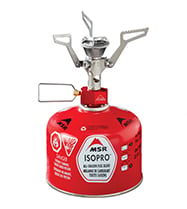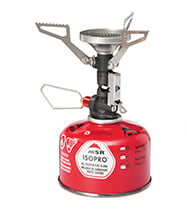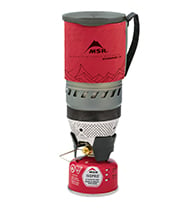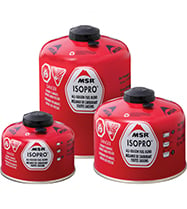Stoves 101: How to Get the Most Out of Your Fuel Canisters
Fuel canisters aren’t the most glamorous of our backcountry tools, but they are certainly one of the most important. The little butane fuel cans have streamlined our approach to backcountry cooking and heating, removing the guesswork of building a fire or the prep time of priming a liquid-fuel, white gas stove.
So how do we maximize what we get out of our prepackaged fuel? Previously we looked at how much fuel we should bring with us on our backpacking trips, but as the seasons change and temperatures start to drop, we want to take a look at how to get the most out of our fuel canisters and how to monitor that consumption in the backcountry.

What factors affect our fuel canisters?
In order to get the most out of your fuel canister, it is important to understand what elements affect canister performance. Possibly the most important factor to consider is temperature. Fuel canisters contain a compressed blend of gases—usually a mix of propane and butane, or propane and isobutane. Internal pressure keeps most of the mixture in liquid form, while a small amount vaporizes into gas and hovers above the liquid. When attached to a stove, this gas is released and feeds the flame of your burner.
However, in order for this to work, the canister’s internal pressure needs to be greater than the pressure outside. If the canister’s temperature drops too much, that liquid won’t vaporize to gas, and, simply put, there won’t be any hot coffee to jumpstart the day.
Two primary factors affect canister temperature: first and most obvious, the outside air temperature. The less obvious factor is a little more surprising—canisters cool as you run your stove. This means a canister might start off strong, but as its temperature (and thus pressure) drops, your stove’s heat output dwindles. Combine that with really cold temperatures and that hot meal may no longer be on the menu.
For butane canisters, this can occur around 31°F. For isobutane canisters, this happens around 11°F; though cooking efficiency can be noticeably affected before these temps.
Another factor that affects the canister is altitude. Altitude can actually offset temperature, as a lower outside pressure (achieved at higher altitudes) helps keep the internal/external canister pressure in better balance. However, the higher you go, the more the cold offsets this positive effect.
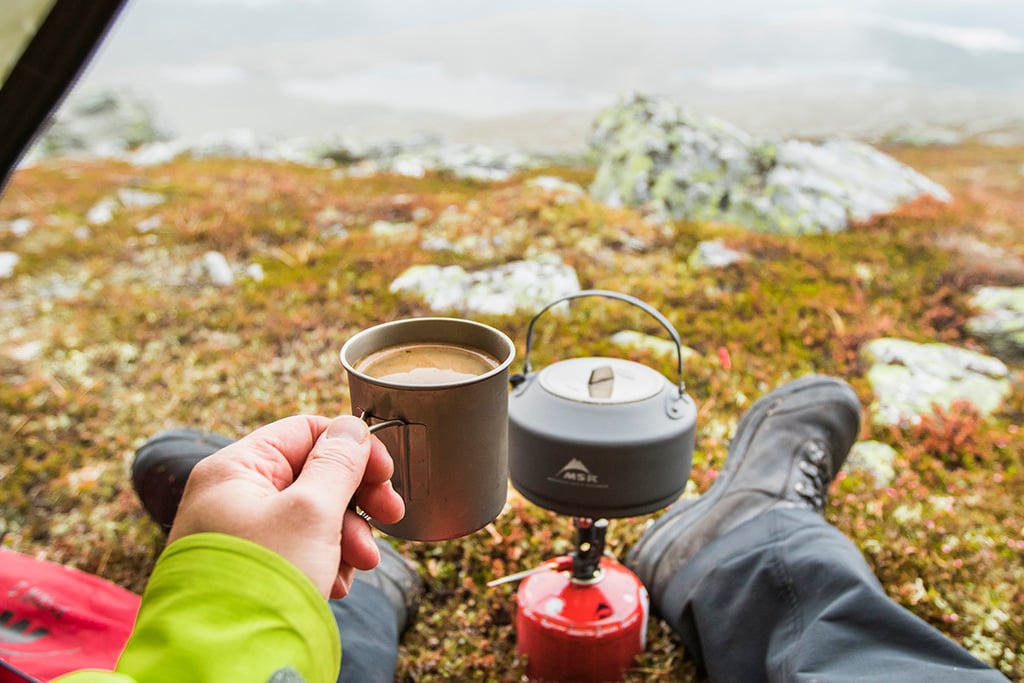
9 Tips to keep stoves burning stronger and longer
1. Keep Your Canisters Warm
The easiest thing to do is to keep your canister from getting too cold. A tried-and-true backpacker’s tip is to warm up your canister before attaching it to your stove by either storing it in your sleeping bag overnight or keeping it in your insulated jacket. Another good trick is to warm up at least two canisters so that as one canister starts to chill and fade during use, you can swap it for a warm one and keep on cooking. Easier than swapping canisters is placing your canister in bowl with an inch or so of lukewarm water. Our DeepDish™ Bowls are absolutely perfect for this, perfectly accommodating any canister of our IsoPro™ Fuel and requiring just a small water sacrifice to keep your stove rolling srtong,
2. Look for Isobutane Fuel Mixes
The fuel formulation matters. Isobutane is a “high-vapor pressure fuel”. Because of this, it vaporizes yet maintains canister pressure at temperatures about 20 degrees lower than butane fuel, keeping your stove cranking out heat when others might fail.
3. Use Liquid-feed Mode
Some stoves, like the MSR WindPro II and WhisperLite Universal, allow you to invert the canister so that it’s feeding liquid fuel to the stove, as opposed to gas. Doing so keeps your stove running strong without the need for vaporization. It does increase fuel consumption rates, but it a great feature when you need it. (Important: Ensure that your stove has this feature before you try it!)
4. Create a Wind Barrier
Remember, even a 5mph wind can cause as much as three times more fuel usage in a given cooking period. Cooking in a protected area can minimize this. Though generally frowned upon from a Leave No Trace perspective, a rock wall can, in some situations, be built to help block wind. Be advised, an actual metal windscreen is not recommended for propane-based canisters, as this can overheat the canister. Not only does this potentially create too much pressure, it can also melt the gaskets housed inside the canister threads and the base of the stove itself that prevent gas from escaping.
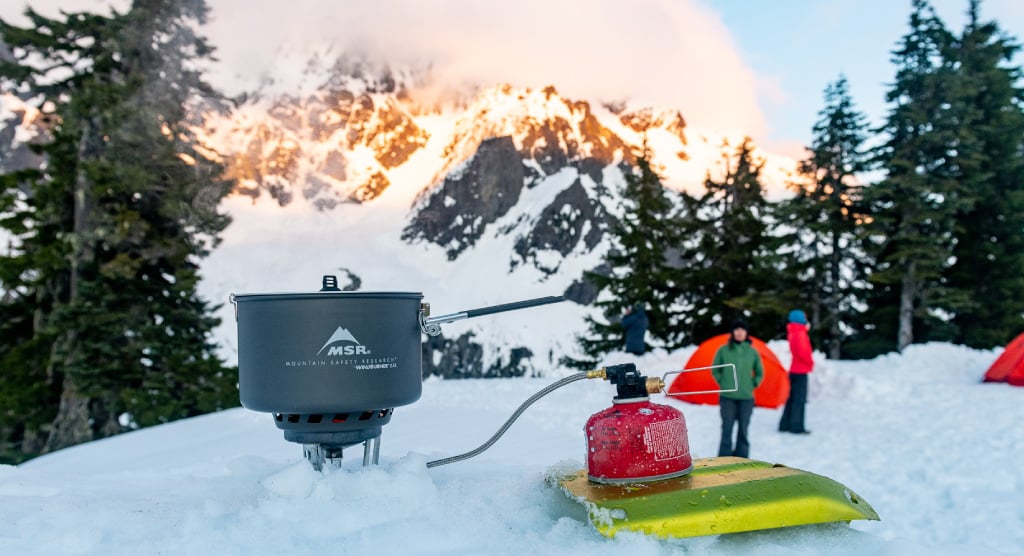
5. Insulate the Canister from the Ground
Placing a nonflammable barrier underneath your canister will keep it up off the cold earth and a little warmer while you’re cooking, allowing it to continue to supply your stove readily with fuel.
6. LowDown Remote Canister Stove Adapter
Part of the hassle of many of the suggestions above is that your stove, pot and canister are essentially all one unit. With a LowDown Remote Stove Adapter, you can turn any canister stove into one with a remote burner. While you should still never use a windscreen around the stove, it does make implementing these suggestions a lot easier and safer while cooking.
7. Don’t Bother Boiling
When making drinks, don’t bring your water all the way to a boil. Nobody can actually drink boiling water. Also, try cutting your boiled water with cold water. If you need one liter of hot water, boil two-thirds of it; then add one-third of cool water. You’ll have hot water and use less fuel.
8. Let Pasta and Rice Soak
Pasta and rice don’t require constant boiling. Put these ingredients in the water as it’s heating and only allow them to boil for a few minutes. Then, shut off your fuel and let them soak with the lid on. They’ll continue to cook while you save fuel.
9. Turn it Down a Notch
Lastly, to squeeze every last meal out of your camp fuel, turn your stove temperature down a notch. It may seem simple, but performance will not be noticeably affected. The amount of fuel consumed will go down considerably, increasing the longevity and efficiency of your fuel canister.
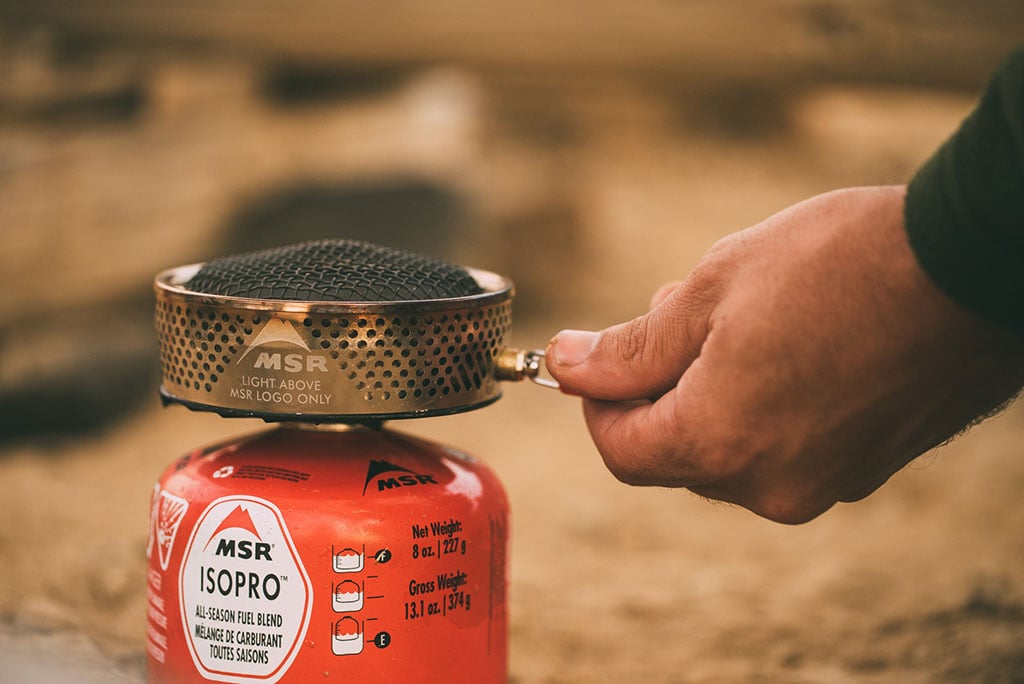
Is a stove system right for you?
If you find yourself frequently camping in cold conditions and cooking boil-only meals, a stove system might be the perfect match for you. Stove systems, like MSR’s Reactor and WindBurner camp stoves, run on canister fuel, yet their exceptionally fast boil times and fuel-sipping efficiencies mean you’ll use far less fuel than a conventional canister stove. These advanced systems are also windproof and pressure-regulated, allowing them to deliver high output, even as the pressure drops in the canister, giving you more consistent and reliable output across a wide range of conditions.
Monitor your fuel amounts in the backcountry
No matter your stove or cooking practices, it’s important to know how much fuel you have left in your canister. MSR IsoPro canisters offer a built-in gauge for just this. Watch the above video to learn how to check your fuel levels in the field.
Related Posts:
- How Much Backpacking Stove Fuel Should I Carry?
- Canister Stoves vs. Liquid Fuel Backpacking Stoves
- The Ins and Outs of Canister Fuels
By Kade Krichko
Updated. Originally Published October 1, 2015.

